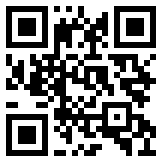Medical device FDA 510 (k) registration is commonly referred to as 510 (K) registration due to its corresponding FD&C Act Chapter 510. 510 (k) is one of the main channels for medical devices to be launched in the United States, and the vast majority of Class II medical devices and local Class I and III medical devices go through this process
Clear the way to open the market. The FDA has a fundamental request for the information required to be included in the FDA 510K certification registration document, which includes approximately 16 aspects:
1) The application letter should include the fundamental information of the applicant (or contact person) and the enterprise, the purpose of 510 (K) submission, the title, model, and classification materials of the device being applied for marketing, the title and 510 (k) number of the product (Predicte Device) for which essential equivalence comparison has been discontinued;
2) Directory, which is a list of all materials included in the FDA510K certification document (including attachments);
3) Authenticity assurance statement, for which the FDA has a standardized sample;
4) Equipment titles, including product common name, FDA classification name, and product trade name;
5) Registration number. If the enterprise has stopped registering when submitting 510 (k), the registration information should be provided. If it has not been registered, it should also be indicated;
6) Classification, which refers to the classification group, category, management number, and product code of the product;
7) Performance specifications, mandatory or voluntary specifications that the product meets;
8) Product identification, including enterprise packaging identification, application instructions, packaging accessories, product identification, etc;
9) Essentially Equal Analogy (SE);
10) FDA 510K certification abstract or statement;
11) Product description, including the expected use of the product, working principle, power source, components, photos, process drawings, assembly drawings, structural representation diagrams, etc;
12) The safety and effectiveness of the product, including various design and testing materials;
13) Biocompatibility;
14) Pigment additives (if applicable);
15) Software certification (if applicable);
16) Sterilization (if applicable), including description of sterilization methods, packaging and labeling of sterilization products.
Medical Dingye Gloves FDA510K Process
Essentially Equal Analogy (SE)
The essential equality comparison is to prove that the products applied for listing and those legally sold in the US market are essentially equivalent in terms of safety and effectiveness. Choosing suitable products for comparison is a crucial step in the 510 (K) application. When stopping the comparison, one should
Stop thinking from the following aspects:
Enterprises must provide sufficient materials to prove that the device being applied for listing is essentially equivalent to the device being compared (SE), otherwise the 510 (k) application will not be processed.
FDA 510K Certification Inspection Procedure
After receiving the 510 (k) materials submitted by the enterprise, the FDA first checks whether the materials are complete. If the materials are complete, it accepts them and sends confirmation to the enterprise. At the same time, it provides the application acceptance number (K YYXXXX), which will also serve as the officially approved number; If it is not complete, request the enterprise to supplement it within the specified time, otherwise it will be deemed as abandoned by the enterprise. After accepting the application, the FDA enters the internal working procedure, which may also request companies to supplement some materials. After the 510 (k) application was reviewed, the FDA did not immediately issue an approval letter. Instead, based on the product risk level, whether the market had previously had adverse reactions to the enterprise, etc., it was certain whether the on-site GMP assessment of the enterprise could be stopped. After the assessment was completed, a formal approval letter (Clearance) was sent to the enterprise; If on-site GMP assessment is not required, the 510 (k) application will be sent to the formal approval letter immediately after approval.
The characteristics of the FDA510K certification application project are high cost, long cycle, and high difficulty. To quickly obtain approval, actively understand FDA guidelines, identify testing standards, and plan inspections
FDA certification welcomes information discussion. Certification aims to assist more people in understanding certification knowledge for enjoyment


